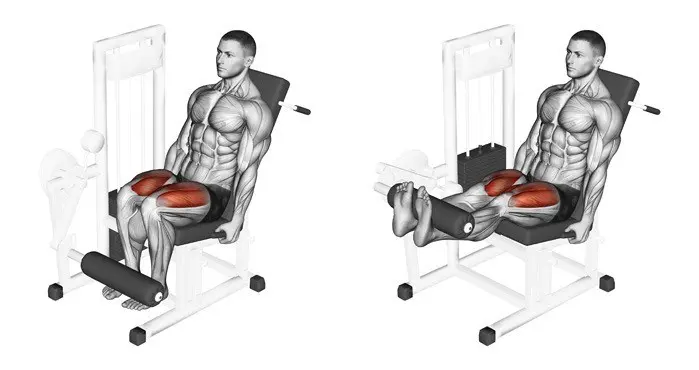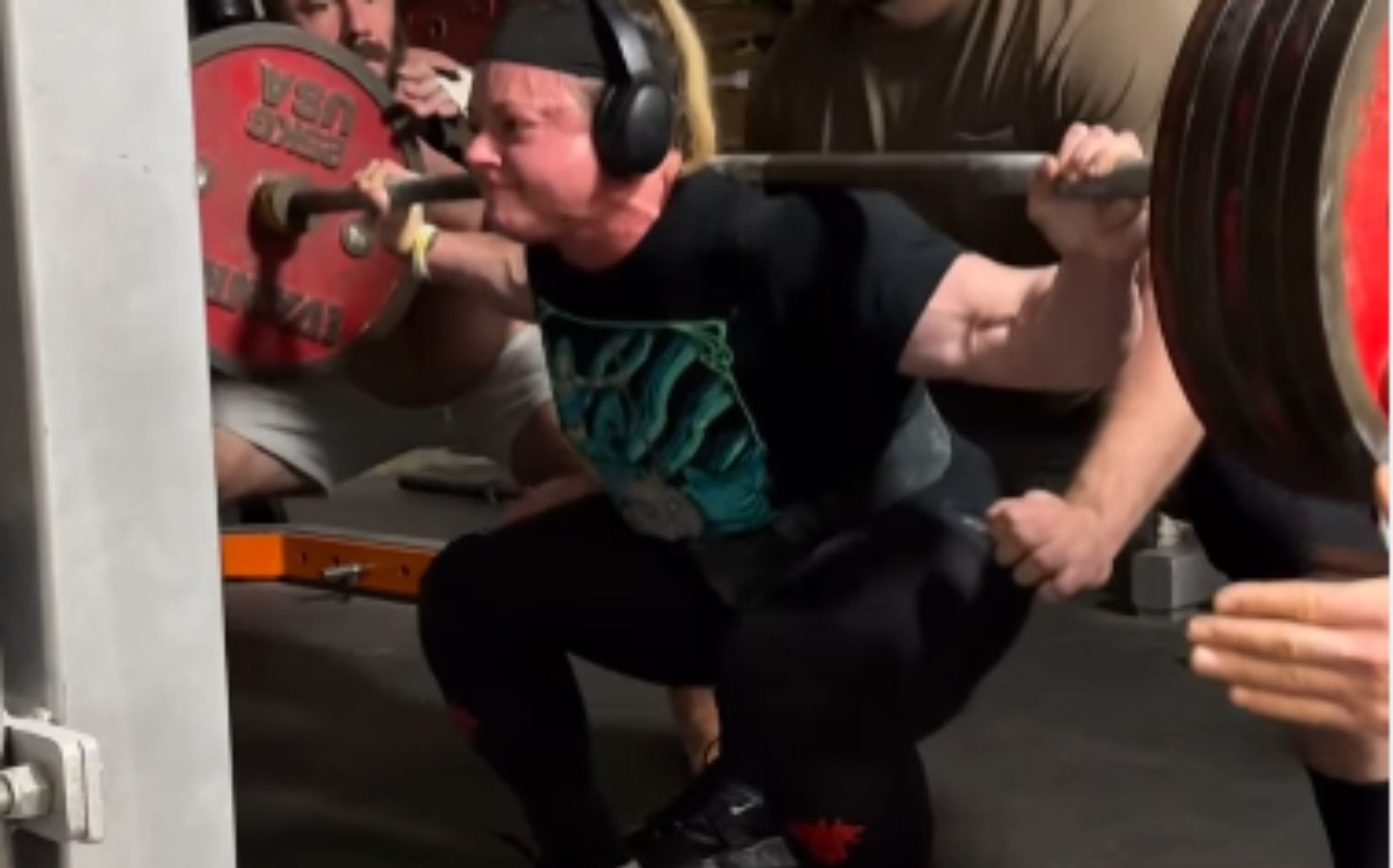According to most training literature, the best repetition range for building muscle mass is 6-12 reps using 67-85% of your one-repetition maximum, or 1RM for short. Judging by how many bodybuilders use this training protocol, it’s clear it has plenty of merit. After all, some of the most famous bodybuilders on the planet have built slabs of muscle using 6-12 reps per set.
However, there are exceptions to the 6-12 rep “rule.” The most obvious is five sets of five, which is a proven rep range that promises big increases in muscle size and strength. At the other end of the scale, there’s the 20-rep squat program, which is an old-school mass system that’s still popular today.
It seems that, contrary to popular belief, you can build muscle with any rep range. I once trained with a top-class amateur bodybuilder who always did sets of 16 reps, and he was HUGE!
In this article, we examine a training method called myo-reps, which is designed to ensure however many reps you do per set, you produce maximal muscle growth.
Newsflash: You’re Doing A Lot of Junk Reps!
According to studies, there is no optimal rep range for building muscle. Instead, it’s training to failure that’s the most important trigger for muscle growth (1, 2).
In other words, it doesn’t matter if you do 5, 10, 15, or 20 reps. So long as the last few reps of your set are very hard, and you only stop your set when you are unable to continue, muscle growth should be the result.
Level Up Your Fitness: Join our 💪 strong community in Fitness Volt Newsletter. Get daily inspiration, expert-backed workouts, nutrition tips, the latest in strength sports, and the support you need to reach your goals. Subscribe for free!
Then, after 1-2 minutes rest, you do another set, again working to failure. You may fail sooner because you are tired, but it’s still those last few reps that are responsible for building muscle. Most lifters do several sets per exercise and several exercises per muscle group to maximize hypertrophy.
Unfortunately, training to failure involves a lot of wasted time and effort. Consider this example workout. Bear in mind that only the last few reps (in bold) are productive, so a lot of the reps you do have no impact on muscle growth:
- Set 1: 1 2 3 4 5 6 7 8 9 10 11 12 (two hard reps)
Rest 60-90 seconds - Set 2: 1 2 3 4 5 6 7 8 9 10 11 12 (three hard reps)
Rest 60-90 seconds - Set 3: 1 2 3 4 5 6 7 8 9 10 11 12 (four hard reps)
So, out of 36 reps completed, only nine were actually productive. That’s a lot of wasted time and effort.
Training systems like drop sets, supersets, trisets, and rest-pause can all help make your workout more productive by keeping you in the “failure zone” for longer. But, even then, you’ll still end up doing a lot of unproductive reps.
The myo-reps training method is designed to increase the number of effective reps you do per workout. The aim of myo-reps is to recruit and then exhaust as many muscle fibers and motor units as possible. As an added benefit, this system also makes excellent use of your time.
Myo-Reps 101
The myo-reps method is a form of high-intensity training. It was developed and popularized by Norwegian strength coach Borge Fagerli during the mid-2000s. Fagerli created his training system after realizing just how many unproductive junk reps (his term) his athletes were doing before hitting failure. He developed myo-reps as a way to increase intensity while lowering workout volume, making training much more time-efficient.

The idea behind myo-reps is that, once you hit failure, instead of taking a long rest and recovering fully, which is a waste of time, you take a short rest so that, when you do your next set, you are already close to failure.
Here’s an example. Again, the effective reps are in bold:
- Set 1: 1 2 3 4 5 6 7 8 9 10 11 12 13 14 15 (four hard reps)
Rest 10-15 seconds
- Set 2: 1 2 3 4 (four hard reps)
Rest 10-15 seconds
- Set 3: 1 2 3 4 (four hard reps)
Rest 10-15 seconds
- Set 4: 1 2 3 4 (four hard reps)
Rest 10-15 seconds
- Set 5: 1 2 3 (three hard reps)
With the myo-reps system, out of the 30 reps performed, 19 of them were productive. And, despite doing five sets, this entire sequence should take no longer than 2-3 minutes.
Because myo-reps are so intense and productive, one time through is all you need per exercise. There is no need to take a long rest and start back at the beginning; your muscle fibers are exhausted, and growth has been triggered. All that’s left for you to do is rest, eat, and grow!
How to Perform Myo-Reps
You can probably figure out how to use myo-reps from the example above. But, in case things still aren’t 100% clear, follow this step-by-step guide:
Step 1 – Warm-up!
You can’t have a good workout without a thorough warm-up. Because myo-reps mostly involves light to moderate weights, it’s already quite joint-friendly. However, you should still prepare your body with a few minutes of easy cardio followed by dynamic mobility and flexibility exercises.
Step 2 – Activation set
This is where your myo-rep workout begins. Choose a light to moderate weight that will force you to fail somewhere in the 12-20 rep range. According to Borge Fagerli, the weight for this set should be based on your experience level. He suggests:
- Beginner: 40 percent 1-RM
- Intermediate: 50 percent 1-RM
- Advanced: 60 percent 1-RM
Choose exercises you can do safely to failure. Squats are NOT a good choice, but leg extensions and leg curls are. Be sensible; if failing to complete a rep could lead to injury, choose another exercise. The chest press machine is fine, but barbell bench presses are not.
Step 3 – 2-5 Mini sets
After hitting failure in your activation set, rest for 10-15 seconds, and then pump out your first mini set. You can either use a watch/clock to time your rest period or take 4-5 deep breaths, which is the method preferred by Borge Fagerli.
Ideally, you should do around 25% of the reps of your activation set. So, if you did 20 reps initially, your first mini set should be five reps. Do not change the weight; if you used 100 lbs for your activation set, that’s what you need to use for the mini sets.
Keep resting and repping out those mini sets until you:
Level Up Your Fitness: Join our 💪 strong community in Fitness Volt Newsletter. Get daily inspiration, expert-backed workouts, nutrition tips, the latest in strength sports, and the support you need to reach your goals. Subscribe for free!
- Complete a total of five mini sets Or:
- Are unable to hit your 25% rep target
Once you have completed the entire sequence, rest a moment and move onto the next exercise in your program.
Pro tip: Make myo-reps even more intense with blood flow restriction (BFR) or occlusion training. Read more about blood flow restriction training here.
Myo-Rep Benefits
The myo-rep training method is quite unusual, and you may be wondering if it’s actually worth doing. The answer is yes! Here are the main benefits of this type of training:
1. Increased workout quality
With standard set/rep schemes, only the last few reps of each set are intense enough to produce results. With myo-reps, once you’ve done your activation set, every rep you do is productive, increasing the overall quality of your workout.
2. Greater time efficiency
With a workout built around standard sets, most people spend more time resting than working out. What a waste! By slashing rest periods from 60-90 seconds between sets to just 10-15 seconds, you’ll get a great workout in much less time.
3. Less joint stress
Myo-reps work best when done with moderate weights and high reps. This is a good method for anyone who finds heavy training causes joint pain. If sets of five reps leave you feeling battered and sore, myo-reps could allow you to continue training hard without making your aches and pains worse.
4. Get a HUGE pump!
The short rests in myo-reps will trigger a lot of metabolic stress; your muscles will be begging for oxygen, and lactic acid levels will soar. As soon as you are done, oxygenated blood will flood into the muscle you’ve just been training, producing a huge pump. A pump is important for muscle growth (3).
5. Variety
Have you ever noticed how a new workout or exercise leaves your muscles feeling more tired or sore than usual? That’s the power of variation! Once your body gets used to your workout, it has no reason to adapt and grow. Doing the same workout over and over is just a waste of time and energy.
Unusual training methods like myo-reps help you get past your training plateaus and get your progress back on track. Plus, doing something entirely new is an excellent way to rekindle your motivation for training.
6. Works well with bodyweight exercises
If you enjoy calisthenic exercises like push-ups, dips, and push-ups, you’ll love myo-reps. Instead of doing lots of high-rep sets to fatigue your muscles, you can get the same benefit in much less time with myo-reps.
There is no need to do set after set of 20-30 push-ups; use myo-reps to make your bodyweight workouts much more challenging and effective.
Myo-Rep Drawbacks
Myo-reps are a safe and effective training method. But, before you ditch your regular set/rep scheme in favor of myo-reps, consider the following potential drawbacks:
1. Not so good for building strength
One of the most unbendable principles of successful strength training is specificity. This essentially means that your body adapts to the type of training you do. While myo-reps are great for triggering hypertrophy and increasing endurance, they’re not so good for building strength – the weights just aren’t heavy enough. If you want to get strong, low reps with heavy weights are a must.
2. Cardio may be a limiting factor for some
Don’t be surprised if myo-reps leave you huffing and puffing like an old steam train! For all intents and purposes, your myo-rep “set” is going to last 2-3 minutes, during which your heart and breathing rate is going to soar. If you aren’t very fit, you could find that you are unable to do the required number of reps or mini sets just because you are gasping for breath.
3. Some exercises work better than others
Myo-reps do not work well with exercises that involve a lengthy setup (squats, bench presses), where lower back strength may be a limiting factor (deadlifts, bent-over rows), or very technical lifts (cleans, snatches). This may mean that you may need to use standard sets and reps for some exercises in your workouts and myo-reps for others.
4. Training to failure all the time can be exhausting
Training to failure is mentally and physically tiring. Remember too that, in a myo-rep workout, well over half your reps will take you very close to failure. It’s gonna be intense! Make sure you get plenty of rest between workouts, prioritize sleep, and monitor for signs of overtraining. You can have too much of a good thing, and that includes myo-reps.
Myo-Reps – Wrapping Up
Myo-reps are NOT the only or best way to build muscle. Instead, they are just another tool you can use to get more muscular and build the body of your dreams.
Use myo-reps as a finisher after doing a few regular sets, or try this training method for a few weeks to get yourself out of whatever training rut you are currently in. Or, you could just save myo-reps for when you are short on time and need a quick but effective workout.
Like drop sets, supersets, and forced reps, myo-reps are designed to increase the intensity of your workouts. As such, if you use them, you must respect your body’s need for rest and recovery. This type of training will take a lot out of you!
But, if you are looking for a new high-intensity training method that will save you a whole lot of time, myo-reps are an excellent choice.
References:
1– PubMed: Low-load high volume resistance exercise stimulates muscle protein synthesis more than high-load low volume resistance exercise in young men https://pubmed.ncbi.nlm.nih.gov/20711498/
2– PubMed: A Motor Unit-Based Model of Muscle Fatigue https://pubmed.ncbi.nlm.nih.gov/28574981/
3– Strength and Conditioning Journal: The Muscle Pump – Potential Mechanisms and Applications for Enhancing Hypertrophic Adaptations https://journals.lww.com/nsca-scj/fulltext/2014/06000/the_muscle_pump__potential_mechanisms_and.11.aspx










